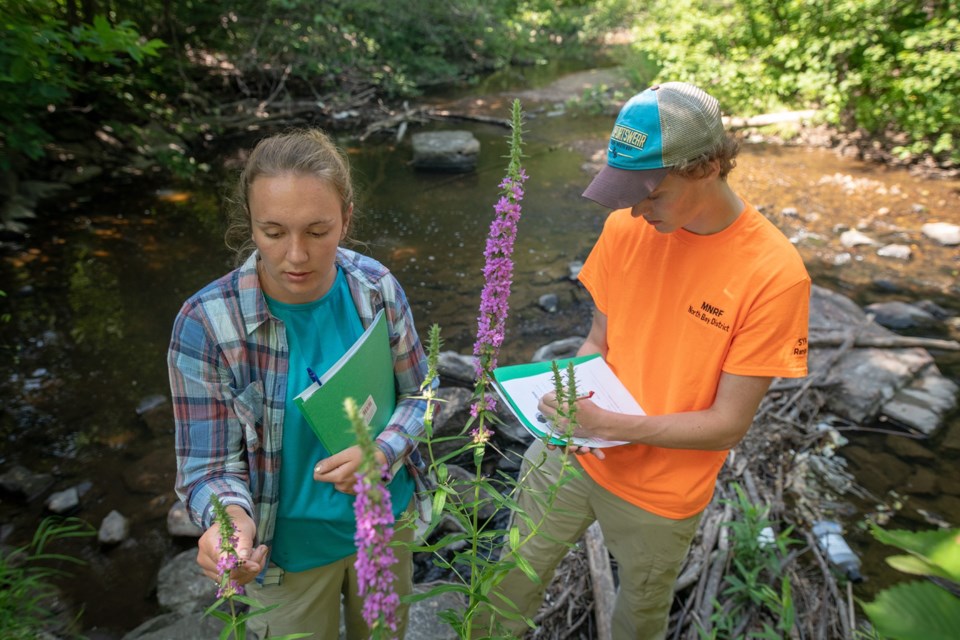Got a plant you kind of look at sideways and wonder if it belongs?
The local Conservation Authority hopes you'll recognize some invasive plants and be part of an effort to eradicate them.
Five invasive plant species were identified and mapped by the Early Detection and Rapid Response (EDRR) Network in partnership with the Ministry of Natural Resources and Forestry Stewardship Youth Rangers and the North Bay-Mattawa Conservation Authority.
“Northern Ontario doesn’t have as many invasive plant species as southern Ontario. If we can help people identify invasive plants in northern regions when they are established early, it can help us all control and get rid of them quickly instead of having them spread,’ said Gabby Nichols, Project Liaison from Ontario Invasive Plant Council.
Japanese knotweed, Himalayan balsam, Purple loosestrife, Bush honeysuckle and Phragmites were found and mapped by in Laurier Woods, along the Kinsmen Trail as well as the Chippewa Creek EcoPath.
“Educating the public to identify invasive plant species is key to the goal of early detection,” said Reilly Henderson, NBMCA’s Stewardship Coordinator.
“By mapping and collecting data on the invasive plants in our conservation areas and trails, it will assist us in future control efforts. Collaborating with the Council and the Youth Rangers on this project was instrumental in obtaining this data,” she added.
The youth rangers who took part in the North Bay project learned how to identify the invasive plant species, GPS their location and use the Early Detection and Distribution Mapping System. (EDDMapS).
EDDMapS is a smartphone application and program that is building a province-wide database supported by the Invasive Species Centre, Ontario Hunters and Anglers, the Ontario Invading Species Awareness Program and the Government of Ontario.
You can help by identifying, mapping and reporting invasive species in your neighborhood or community by using the EDDMapS Ontario. It is found online at or you can report findings by calling the Invading Species Hotline at 1-800-563-7711.
Best management practices, technical bulletins, and factsheets for managing invasive plant species can be found on the OIPC website:
The ISAP website provides invasive species fact sheets and other guides.
Another resource for information is the Early Detection and Rapid Response Network program. This program aims to equip community members with the skills and resources needed to detect and reduce invasive species in Ontario. The EDRR Network is run in partnership with the OIPC and ISC, the website has technical bulletins for many invasive species available.
A hardcopy of the Quick Reference Guide to Managing Invasive Plants in Ontario can be picked up at the North Bay-Mattawa Conservation Authority, 15 Janey Ave., North Bay.
The Ontario Invasive Plant Council is a multi-sector, non-profit group committed to the collaboration of organizations and citizens in order to more effectively respond to the threat of invasive plants in Ontario.



